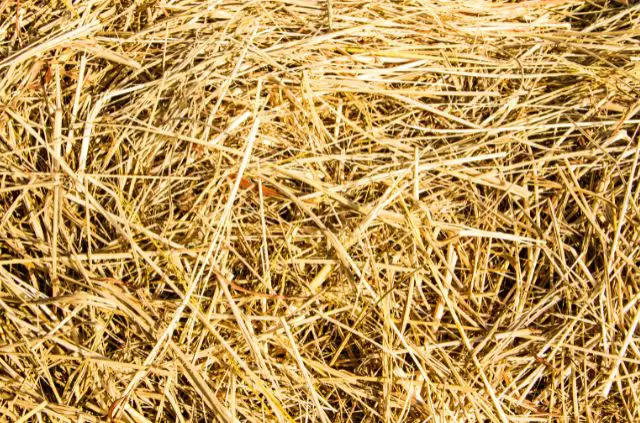Will Grass Grow In Sand?
If you’ve ever done a soil test, you know that dirt isn’t perfect. There can be rocks, silt, clay, and many other materials in your lawn. This raises an interesting question: will grass grow in sand?
It’s possible for grass to grow in sand, but it can be a challenging task. The main issue is that sand is dry and doesn’t do a good job at holding water. This can be a big problem when trying to grow new grass seed.
Choosing the right type of grass seed can help in sandy soil and you can also try adding a layer of topsoil. In the sections below I’ll walk you through how to go about this job, in order to establish healthy grass.
How to Grow Grass in Sand
You will need to follow a multi-step process to successfully grow grass in sand. I’ve failed at this before, because I didn’t fully understand what it took for new seeds to germinate. The most important thing is preparing the soil.
1. Till The Soil
It’s crucial to till the soil before planting new grass seed. This process will loosen up the dirt and remove weeds. You also want to clear out any large rocks during this initial stage.

The biggest reason to use a tiller is to relive compacted soil. Grass seed will have trouble germinating if you just throw it on top of hard dirt. But it can also help mix existing soil with a fresh layer of topsoil.
2. Add Topsoil
This next step is essential for growing grass in sand. Because sand is poor at water retention, you will need to mix in topsoil, or compost. This will improve the overall soil quality and help with germination.
Topsoil should be thoroughly mixed in with the sand. Throwing it on top of the surface will only limit new grass growth. In order for strong roots to develop, you need to have enough soil blended in so it will hold water.
3. Apply Fertilizer
Using fertilizer can be a great way to grow a rich, green lawn. It will help new grass grow and enhance the germination process. Just make sure to use fertilizer that doesn’t have weed preventer.
This may sound appealing, but weed preventer can also stop new grass seed from growing. You should continue using this product during the growing season, until the grass has fully matured.
4. Plant New Seed
After you’ve tilled the soil, added topsoil, and applied fertilizer, it’s finally time to lay down new seed. Whenever planting grass seed in the sand, it’s crucial to use a product that does well in this type of soil.
The most common grass types that grow in sand are Bermuda grass, fescue, and sand bluestem grass. Whichever option you decide on, make sure to follow the directions on the bag for spreading purposes.
5. Water
It shouldn’t come as a surprise when I tell you that new grass seed needs water. This is especially important during the beginning stages, as the seeds will rely on water to germinate.
Irrigation will vary depending on the type of grass and climate. But you can generally expect to water around 2-4 inches per week. After the germination process you can then start to cut back on the water.
6. Cut High
Once new grass has been established, it will need to be cut. When it comes to setting the correct blade height, you should always mow high. This will prevent grass from drying out due to a lack of moisture.
If you cut the grass too short, there’s a chance that it will go dormant. And scalping your lawn is something you want to avoid with new grass. This is more common during those hot summer months.
Does Sand Help Grass Grow?
By now you should understand that sand doesn’t help grass grow. This is due to the fact that sand isn’t very good at holding water. In order to promote grass growth, you need wet soil that is capable of holding moisture.

So, why do people put sand on their lawn? Sand is commonly used on golf courses as a top dressing. But you should know that only a very fine layer of sand is used. This is done as a maintenance technique to control weeds and thatch.
Sand can also be used to level out uneven areas on your lawn, or places where grass won’t grow. But if you’re looking for an even better material to use as top dressing, it makes more sense to use compost – as it contains vital nutrients that will enrich grass.
How Much Topsoil Over Sand to Grow Grass?
It’s recommended to use at least 2-4 inches of topsoil on sand for growing new grass. That’s because a healthy lawn starts from the ground up. You want the roots to be as strong as possible in order to have a healthy lawn.
So, how long can grass roots be? Grass roots can be anywhere from 6-24 inches long. And the deeper amount of sandy soil you have will only make it harder for grass roots to grow.
That’s why tilling the soil and mixing in topsoil (or compost) is so important. Tilling will relieve compacted soil commonly found in sand and the topsoil with aide in moisture retention. This combination gives you the best chance at growing grass.
Final Thoughts
Growing grass in the sand isn’t the end of the world. It may seem challenging at first, but as long as you follow the steps listed above, you can have a green lawn in a matter of weeks.
The best thing you can do is prepare the soil for new seed. This can be done be tilling and using topsoil (or compost). From there, it all comes down to applying fertilizer to promote new grass growth and watering on a regular basis.
And when you’re choosing grass seed, make sure to buy a product that can grow in sand. You can even get a soil test and bring it down to your local hardware store. They will tell you what grass types will thrive in your environment.
Search Terms
- Will grass grow in sand?
- Does sand help grass grow?
- How much topsoil over sand to grow grass?






